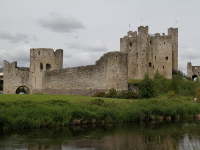
County Meath
County Meath is situated on the east of Ireland, to the north from Dublin. Most of its lands lies inland, only the small part has access to the Irish Sea. Thanks to very fertile soil of the Boyne River area, the first people settled here over 5000 years ago, and many of the structures they built survived until today like for example passage tombs of Bru Na Boinne (Newgrange, Knowth and Dowth), which is Europe's largest and most important concentration of megalithic art (designated as a UNESCO World Heritage Site). Less known, The Loughcrew Passage Tombs (Sliabh na Caillí) complex is another very important and interesting Neolithic site located in County Meath.
The next site of huge historical importance, associated with many irish legends is The Hill of Tara, seat of High Kings of Ireland, which prospered until 10th Century. County Meath has been also associated with Christianity in Ireland since its earliest days. The legend says, that the Hill of Slane was a place where St.Patrick challenged the Druids and lit first Paschal fire in Ireland, in 433 AD. The Kells Abbey, founded around 800 A.D is famous for the four-volume, illustrated, manuscript of the Gospels, The Book of Kells ( which it is on permanent display at Trinity College Library, Dublin). Among historical monuments of architecture in County Meath you will also find the largest Anglo-Norman fortress in Ireland, Trim Castle. Battle of the Boyne, which took place across the River Boyne near the town of Drogheda in 1690, raises the historical significance of County Meath. Here, William III defeated forces of James II, what meant the end of Catholic Ireland and repression for 200 years.
Interesting places in county Meath
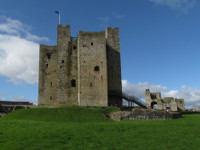
Trim Castle
East Ireland | County Meath
The castle situated on the banks of River Boyne in town of Trim, County Meath, is largest Anglo-Norman fortification in Ireland. The first defensive structure was built here in 1172, by Hugh de Lacy, to whom the lands of Meath were granted after Norman invasion of Ireland. It was a motte, with timber tower defended by double palisade and external ditch. Hugh... more info and photos
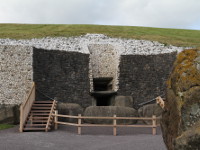
Newgrange
East Ireland | County Meath
The passage tomb of Newgrange is one of the most important Neolithic Monuments in Europe and toghether with Knowth and Dowth, has been designated as UNESCO World Heritage Site, what makes it one of the most visited tourist attractions in Ireland. It is located about 4 km east of the village of Slane, in County Meath (the only access to the monument is throug... more info and photos
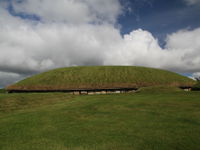
Knowth
East Ireland | County Meath
Knowth Passage Tomb is one of the most important Neolithic Monuments in Europe and toghether with Newgrange and Dowth, has been designated as UNESCO World Heritage Site, what makes it one of the top tourist attractions in Ireland. It is located about 4 km east of the village of Slane, in County Meath (the only access to the monument is through the Bru na Boi... more info and photos
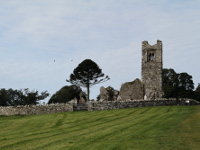
Hill of Slane
East Ireland | County Meath
Hill of Slane located in County Meath (visible from road N2 in Slane Village) has been associated with Christianity in Ireland since its earliest days. The legend says that here, on Easter 433 AD St Patrick lit the first paschal fire, which was against druidic law. As a consequence of this incident he was hauled before King Laoghaire (pagan High King of Tara... more info and photos
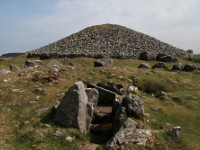
The Loughcrew Passage Tombs
East Ireland | County Meath
Loughcrew Passage Tombs also known as Sliabh na Caillí (Hill of the Witch) are complex of megalithic monuments located about 4km south east from town of Oldcastle in County Meath. This ancient burial grounds, dating between 3500 BC and 3300 BC are spread over few hills. "Cairn L", "Cairn D" and some smaller cairns are situated on the hill of Carnbane West... more info and photos



















